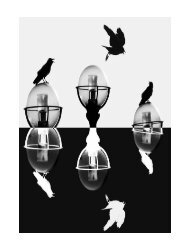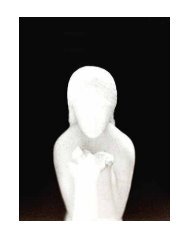Odds and Ends Essays, Blogs, Internet Discussions, Interviews and Miscellany
Collected essays, blogs, internet discussions, interviews and miscellany, from 2005 - 2020
Collected essays, blogs, internet discussions, interviews and miscellany, from 2005 - 2020
You also want an ePaper? Increase the reach of your titles
YUMPU automatically turns print PDFs into web optimized ePapers that Google loves.
as a critical methodology. This theory operates within the context of an assumed authorial persona, an individual
consciousness, remarking upon an external reality. It assumes that the reader’s role in the cognitive process of poetic
appreciation is essentially passive, a mere witnessing to the experiences and perceptions of the authorial persona.
Consequently, readers are excluded from any participation in the creation of a meaning that has individual
significance for them, and with which they can fully empathise. This lack of a plurality of meanings limits poetry’s
emotional effect, as well as greatly reducing the possibilities for varied exegetical analysis.
The diminishment in poetry volume sales over the past 50 or so years is, arguably, due to the increasingly empiricist
mode of writing that has found favour during this period. To obstruct the ambiguity inherent in language is to
obviate the natural instincts of human beings to make sense of themselves and their experiences. If one looks at the
poetry of children and the so-called “bad” poetry of adults, for instance, one finds it replete with imprecision.
Contemporary poetry fails to sell in vast numbers because it leaves little to the imagination and disallows a personal
interpretative interaction with the text. Its prose-like quality, which is excessively similar to prose fiction, leaves the
reading public faced with a choice: to read poetry, or to read a novel. They generally opt for the latter because they
perceive it as more value for money.
Ideally, each reader should be permitted the fundamental privilege of formulating a meaning which would (for that
reader) be the quintessence of the poem’s significance. The poem, in and of itself, is of little consequence other than
as a cipher for this practice to occur. The words and images of a poem should be looked upon as devices that enable
readers to recall their own experiences, reflect present circumstances, and anticipate future desires. Each word
should have the potential to enable the reader to derive personal significance from it. By doing this, the reader
becomes, in effect, the composer of the poem, and the definer of its limits. It is of minor importance whether the
commonly received meaning of the poem is discerned by the reader or not, as the ultimate aim of such a personal
response is to enhance the enjoyment value of the work for that reader alone. What the poem is “meant” to mean
from an authorial standpoint should not be of paramount concern for readers wishing to gain satisfaction and
enjoyment from the work. Such an approach to reading poetry, if widely understood and accepted, could possibly
restore poetry to its status as a significant artform.
Notes
1. In a letter to John Taylor dated 27 February 1818 Keats writes: ‘I think Poetry should surprise by a fine excess and not by
Singularity- it should strike the Reader as a wording of his own highest thoughts and appear almost as a remembrance’. See
Selected Letters of John Keats, p.74.
2. Arthur I. Miller, Einstein, Picasso: Space, Time, and the Beauty That Causes Havoc (New York: Basic Books, 2001), p.23.
3. Miller, p.23.
4. Miller, p.3.
5. Miller, p.3.
6. Miller, p.3.
7. Miller, p.3.
8. Miller, p.3.
9. Miller, p.2.
10. Miller, pp.3-4.
11. Miller, pp.174.
12. Picasso was fascinated by the psychologist William James’s “folded visual card” experiment where a drawing of a half folded
card appears to move back and forth while remaining in position with the light and shade unaltered. See Einstein, Picasso: Space,
Time, and the Beauty That Causes Havoc, p.123.
13. Miller, p.259.
14. Miller, p.165.
15. Thomas Vargish and Delo Monk, Inside Modernism: Relativity Theory, Cubism, Narrative (New Haven and London: Yale
University Press, 1999), pp.25-26.
16. Miller, p.253.
17. Miller, p.259.
18. Vargish and Monk, pp.35-36.
19. Eduardo Kac, ‘Recent Experiments in Holopoetry and Computer Holopoetry’, Display Holography,
Fourth International Symposium (1991), 229-236 (p.1).
20. Alan Soldofsky, ‘Bifurcated Narratives in the Poetry of Robinson Jeffers, C. K. Williams, and Denis Johnson’, Narrative, 11
(2003), 1-19, (p.1)
21. Translation: ‘When April with his showers sweet with fruit / The drought of March has pierced unto the root / And bathed
each vein with liquor that has power / To generate therein and sire the flower’.
35




